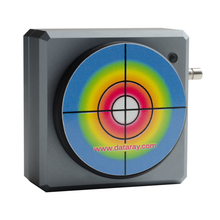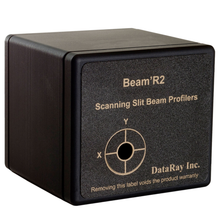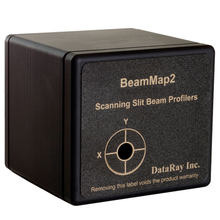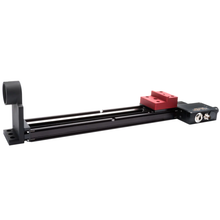Laser beam profilers, whether they are beam profiling cameras or scanning slit beam profilers, record and display the characteristics of the spatial intensity of a laser beam or other form of light. There are a number of factors to consider when looking to acquire a laser beam profiler. Since many features of light vary from application to application, a beam profiler must take into account the end-user’s specific criteria and relevant beam parameters to effectively measure the desired values.
When choosing a laser beam profiler, consider that laser beam profilers are designed to measure light with a specific set of characteristics. Understanding these characteristics will help you effectively choose a beam profiler, since a system well-suited to one application may be far from ideal with respect to another.
For purely Gaussian or near Gaussian beams, scanning slit beam profilers are often the better choice. Scanning slit systems, such as the Beam’R2, or BeamMap2, offer much higher resolution than camera-based systems. However, they do not display an actual image of the beam, rather a reconstruction based on a 2D scan in X and Y. In addition, the BeamScope-P8 has a slim, probing detector only requiring 12 mm of space, and additionally is capable of performing a 2D raster scan of up to 45 x 23 mm when paired with a 2D stage.
In cases of non-Gaussian beams, camera systems, like the new WinCamD-LCM, are usually the best solution. Most camera systems work well with pulsed beams, allowing the user to lock into a pulse train utilizing the trigger feature to select and display the image. Beams as large as 11 mm can be directly measured with new large area sensor camera systems, and with optics virtually any size beam can be measured.
Key criteria for selecting the ideal beam profiling system for your specific application include: wavelength(s); whether your beam is continuous wave (CW) or pulsed, the pulse repetition rate (PRR); beam diameter; power level; resolution required; and any other specific measurement(s) needed (e.g., M², divergence, focus, relative power, beam wander, multiple beams, etc.). In some cases, use of accessories, like our M2DU stages, can help you perform these additional measurements. In other cases, use of a specialized product, like the patented BeamMap2 – which can perform M-squared measurements in real-time – may be an appropriate solution.
While ultimately only your unique requirements will determine the product that is the most ideal solution, our Product Selector is a great tool to identify the laser beam profilers that may be well-suited to your needs. If you need further guidance, we’d be happy to help. Email us at [email protected] or call 866-946-2263 (+1-530-395-2500) from outside the US).




